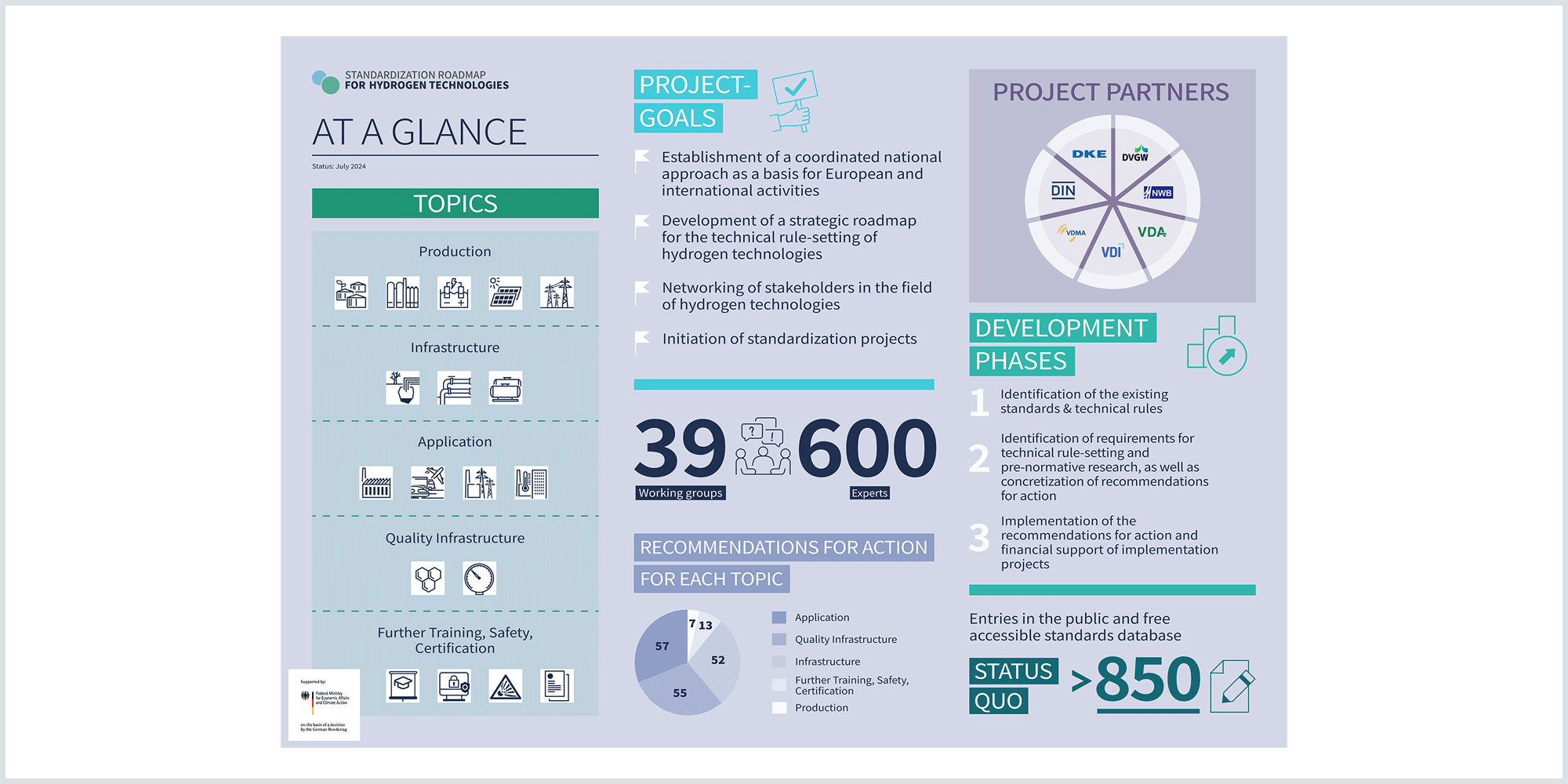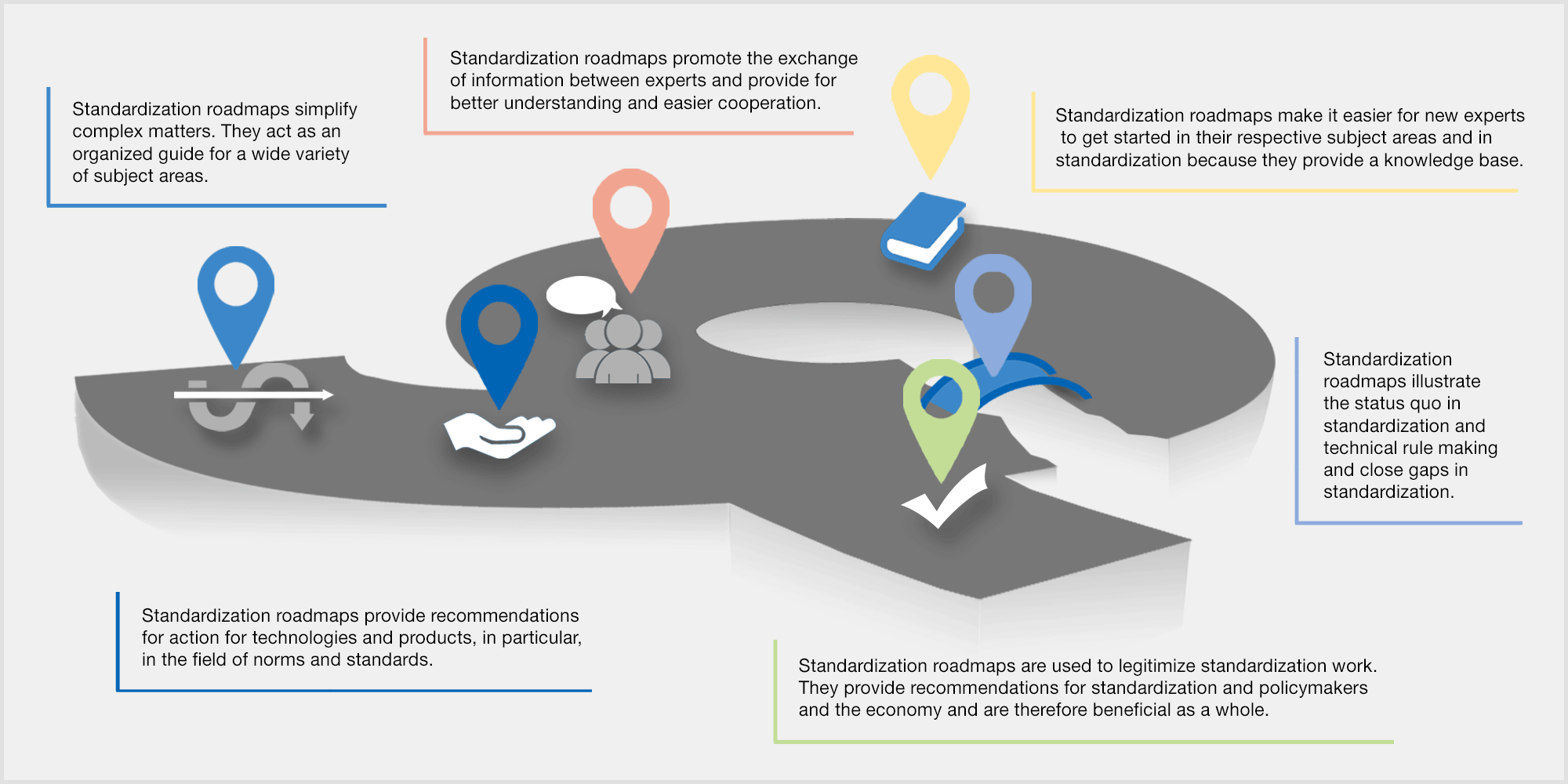Various committees already exist at the national, European and international level for standardization and technical regulation in the field of hydrogen technologies. In addition, there are projects and initiatives by other participants and interest groups that contribute to consensus building and the exchange of interests with regard to hydrogen technologies. On the basis of these activities the objectives and content of the Standardization Roadmap for Hydrogen Technologies (NRM H2) serve as a guideline for standardization and technical regulation.
On the basis of these activities the objectives and content of the Standardization Roadmap for Hydrogen Technologies (NRM H2) serve as a guideline for standardization and technical regulation. The Standardization Roadmap for Hydrogen Technologies first describes the standardization landscape and technical regulation in the field of hydrogen as well as the actors involved.The objectives and methodological approach of the project are then explained. The final results make up the main part of the Standardization Roadmap for Hydrogen Technologies. These are divided into the five working groups:
- Generation
- Infrastructure
- Application
- Quality infrastructure
- Training, safety, certification
The Standardization Roadmap for Hydrogen Technologies concludes with an outlook on the further developments of the joint project based on the results obtained. One thing is already clear: the joint project will continue to concretize and consolidate the existing roadmap in order to further advance the development of the quality infrastructure for hydrogen.
Further work and implementation of the recommendations for action will be included in the next version of the Standardization Roadmap for Hydrogen Technologies, which is due to be published at the end of the year 2025.














